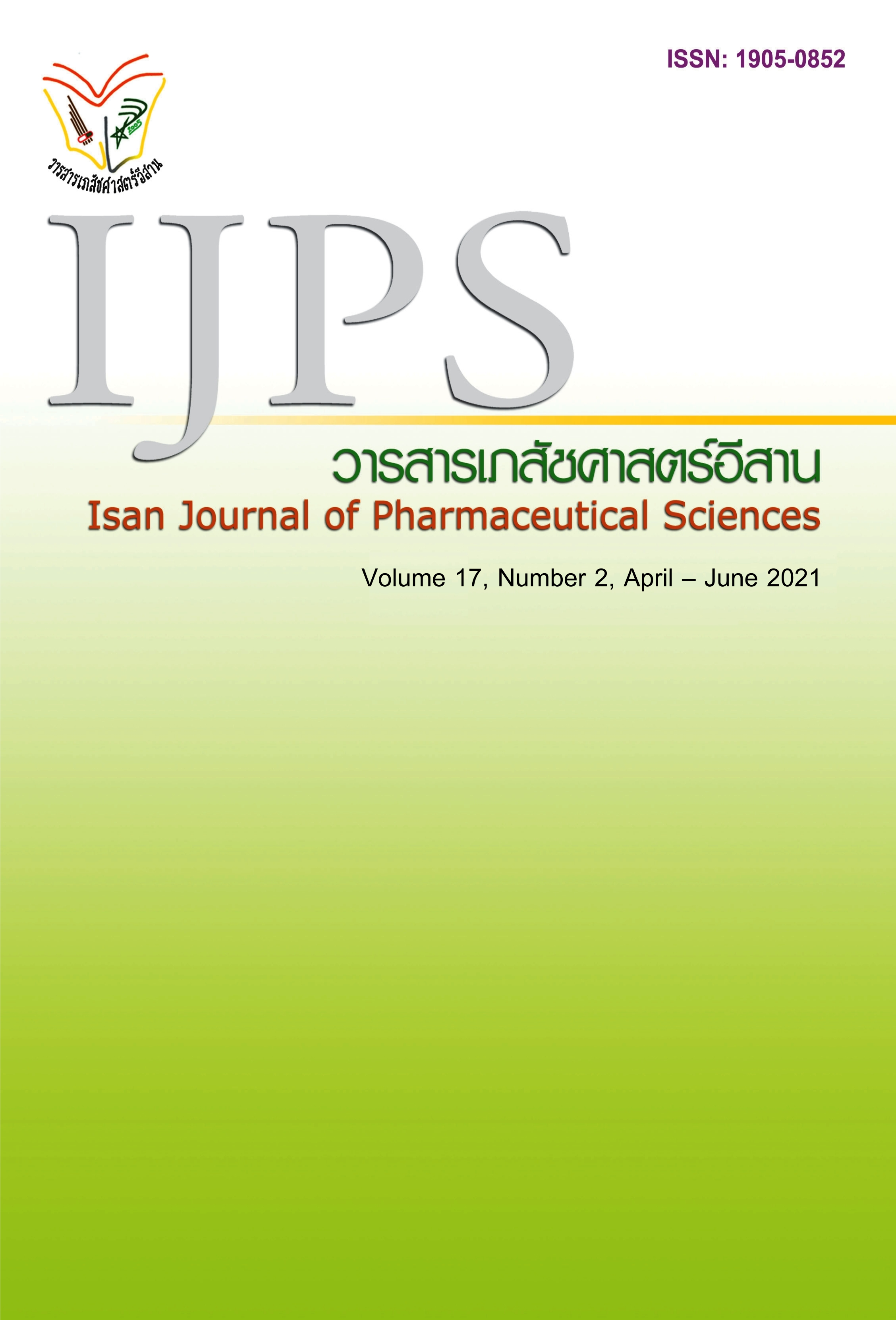Sustainable Growth in Pharmaceutical Manufacturing Firms of Thailand
Main Article Content
Abstract
This article focuses on the factors that affect sustainable competitive advantage and sustainable growth of business organizations in the pharmaceutical manufacturing industry of Thailand in order to propose guidelines to build a model for sustainable growth. By studying the form and nature of business of Thai pharmaceutical manufacturing firms and reviewing the relevant theories and concepts on the development of pharmaceutical industry in Thailand, we identified three key factors that contributed to sustainable growth. These were the national drug policy, the national strategic drug development plan and the national economic and social development plan. The Thai pharmaceutical industry is important to public health, stability and the country's economy, both in normal conditions and in emergencies. Unfortunately, only five percent of pharmaceutical entrepreneurs are stable in the industry. The firms with the highest income in the industry are usually joint ventures of Thai and foreign shareholders. In general conditions, the current situation and trends of the industry appears to have the lowest potential among the whole health industry. Of all Thai manufacturers, only five are able to produce active pharmaceutical ingredients. However, they only produce old drug raw materials that do not require advanced technology for production. Approximately 90 percent of ingredients are imported from foreign countries. As a result, the country is unable sustain itself and provide stability in medicine, especially in emergencies such as the Covid-19 pandemic situation and at war. Therefore, applying concepts and theories related to sustainable growth, such as the triple value chain and the triple bottom line that measure the impact of organizational activities, could be one approach to improve sustainability in this field. These impacts may be reflected in value added to the firms in terms of profits as well as the value of the equity capital of society and the environment. In conclusion, sustainable growth in pharmaceutical manufacturing firms of Thailand can be measured with three main parameters: economic performance, social performance and environmental performance , which can be used as a basis to create a model for sustainable growth in the future.
Article Details
In the case that some parts are used by others The author must Confirm that obtaining permission to use some of the original authors. And must attach evidence That the permission has been included
References
AMOS O. Arowoshegbe. Sustainability and Triple Bottom Line: An Overview of Two Interrelated Concepts. 2016. IUJA 2016; Aug. (2): 88-123. Available on https://www.researchgate.net/. Accessed on June 1, 2020,
Government Savings Bank Economic Research Center. Industrial Update / Pharmaceutical industry. 2017. Available from https://www.gsb.or.th/. Accessed on June 3, 2020.
Government Savings Bank Economic Research Center. Pharmaceutical industry. 2019. Available from https://www.gsb.or.th/. Accessed on May 31, 2020.
Krungsri Research Center. Business trends / industry years 2019 – 2021. 2019. Pharmaceutical industry. Available from https://www.krungsri.com/. Accessed on May 30, 2020.
Management System Certification Institute. Guidelines for conducting business according to the Tri Bottom Line principles. 2020. Accessed from https://intelligence.masci.or.th/. Accessed on May 30, 2020.
Ministry of Commerce, Department of Business Development. Report of income statement of drug companies. 2019. Available from https://www.dbd.go.th/. Accessed on June 3, 2020.
Ministry of Commerce, Department of Trade Negotiations. Value of Thai exports and imports by 2020 / Pharmaceutical products. 2020. Available from https://www.dtn.go.th/. Accessed on June 3, 2020.
Ministry of Industry, Department of Industrial Works. Social Responsibility Award. 2020. Available from http://www.industry.go.th/. Accessed on June 1, 2020.
Ministry of Industry, The Board of Investment of Thailand. BOI adjusts the promotion policy for pharmaceutical industry. 2020. Available from http://www.boi.go.th/. Accessed on June 3, 2020.
Ministry of Public Health, Food and Drug Administration. List of Pharmaceutical Manufactures with PIC/S GMP Certified. 2017. Available from http://www.fda.moph.go.th/. Accessed on May 30, 2020.
Ministry of Public Health, Food and Drug Administration. National policy on medicine and strategy National Drug System Development 2017-2021. 2017. Available from http://ndi.fda.moph.go.th/. Accessed on May 30, 2020.
Ministry of Public Health, Food and Drug Administration. Situation related to the development of Drug, Herbal Medicine and Biological Products. 2017. Available from http://ndi.fda.moph.go.th/. Accessed on May 31, 2020.
National Economic and Social Development Council. National Strategy 2018-2037. 2018. Available from http://nscr.nesdb.go.th/. Accessed on June 2, 2020.
National Economic and Social Development Council. The 12th National Economic and Social Development Plan 2017-2021. 2017. Available from https://www.nesdc.go.th/. Accessed on May 30, 2020.
National Institute of Development Administration. Professional MBA NIDA. 2018. Available from https://es-la.facebook.com/prombanida/photos/triple-bottom-line. Accessed on June 7, 2018.
Savitz, Andrew W. The Triple Bottom Line. San Francisco. A Wiley Imprint; 2006.
Stock Exchange of Thailand. Social Responsibility. 2020. Available from https://www.set.or.th/. Accessed on May 30, 2020.
Thaipat Institute. Global warming and climate change. 2016. Available from http://www.greenoceansociety.com/. Accessed on June 6, 2020.
United Nation. Sustainable Development Goal. (2018). Available on https://sustainabledevelopment.un.org/. Accessed on June 1, 2020.
World Commission on Environment and Development. Report of the World Commission on Environment and Development - Our Common Future. 2018. Available on https://sustainabledevelopment.un.org/. Accessed on June 1, 2020.


